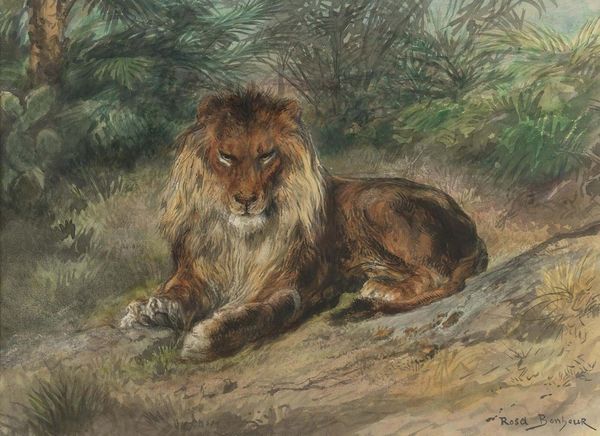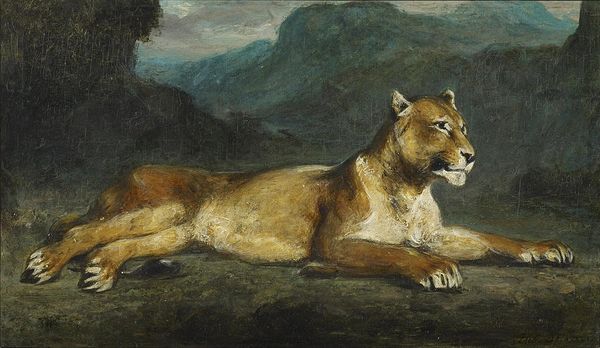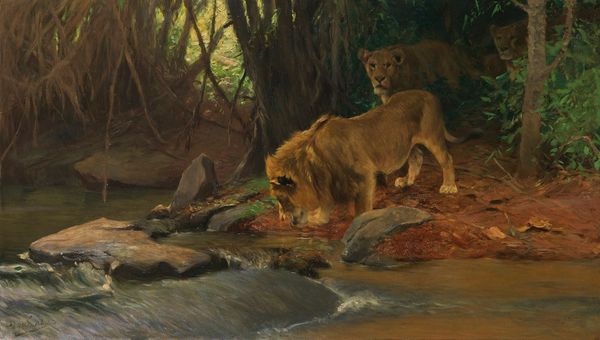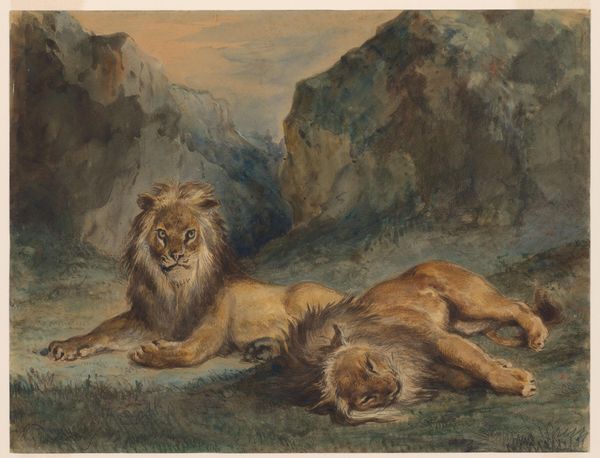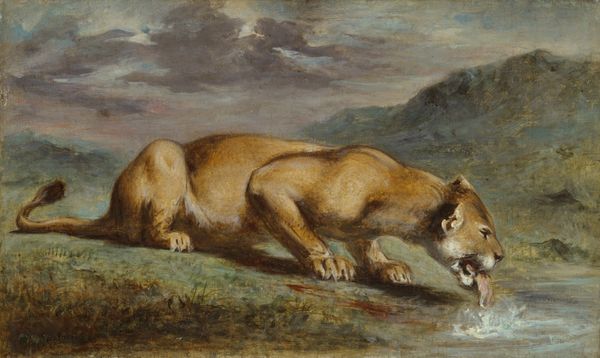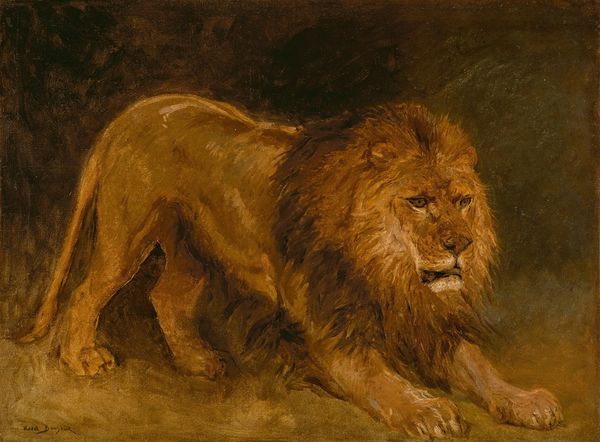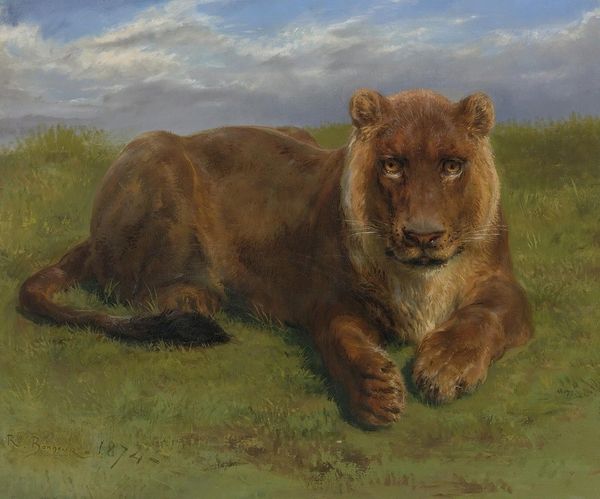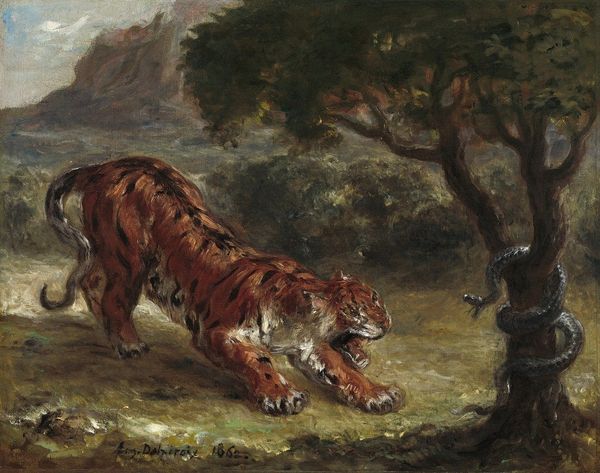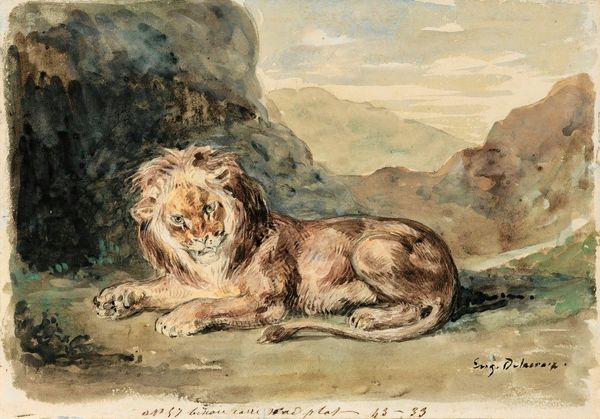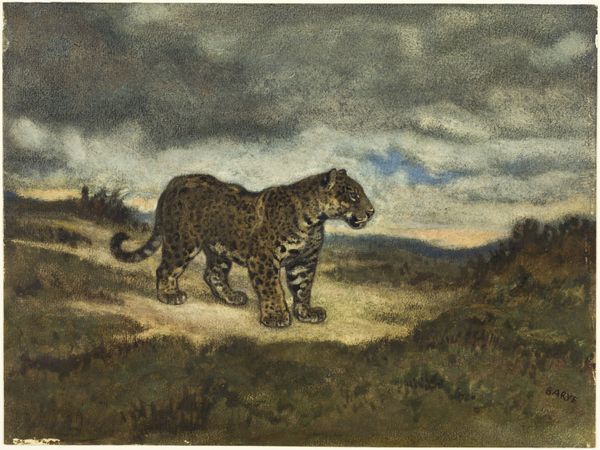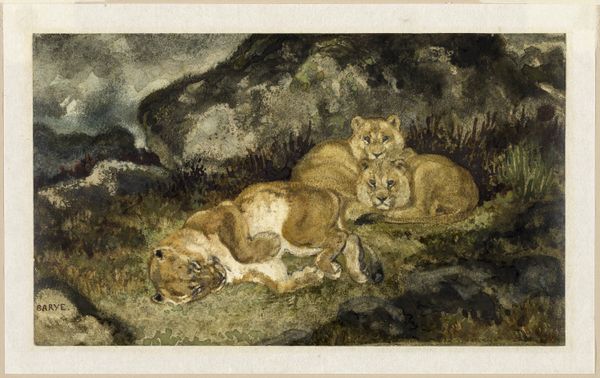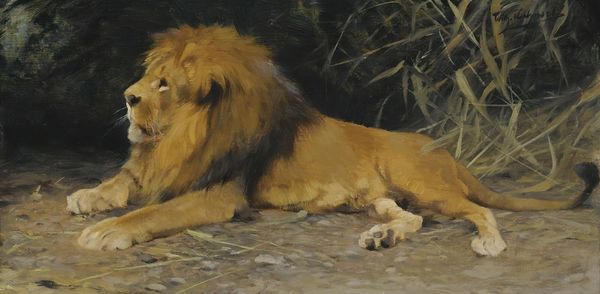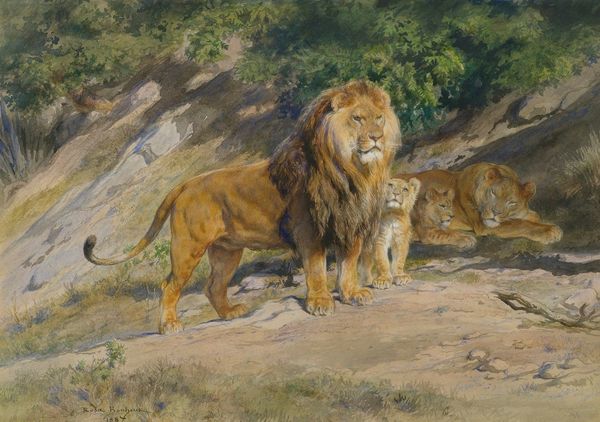
drawing, dry-media, pastel
#
drawing
#
animal
#
landscape
#
dry-media
#
oil painting
#
genre-painting
#
pastel
#
realism
Copyright: Public Domain: Artvee
Curator: This is "Lion Walking to the River," created around 1917 by Wilhelm Kuhnert. It appears to be pastel and dry media on paper. Editor: It has this fantastic muted palette; like a faded memory. The lion emerges from the darkness with a palpable sense of forward motion, a stealthy quality, as if caught mid-stride in his natural habitat. Curator: Kuhnert was, of course, celebrated for his paintings and drawings of animals, particularly those in the African landscape. He traveled extensively in Africa for study, something relatively uncommon at the time, focusing his art on wildlife illustration during the late 19th and early 20th centuries, when hunting narratives were extremely popular. Editor: Right. It’s fascinating to consider this in the context of those hunting narratives, because the materiality here-- the medium--softens any possible glorification of hunting. These aren't bold oils but chalky pastels. How interesting it is to depict the hunter by using this soft, almost impermanent medium to picture a predator. Does the material undermine or reinforce colonial hunting attitudes? Curator: That's a complex relationship. On one hand, there's this artistic nod towards representing and exoticizing wild spaces and its animals through artistic documentation. On the other, we see how the art market’s interest in accurate representation influenced Kuhnert, shaping the way he composed his work. Editor: Look at the layered application of the pastel, how the artist works the material, creating textural depth of light and shadow using a dry medium on what I imagine would be relatively cheap drawing paper for expedition work, or study pieces? Curator: I agree. We should also look into how such art fueled popular scientific conceptions of Africa in Europe at the time, because the power of visual imagery extended into scientific discourse, even the artist himself adopted the role of observer. Editor: This piece invites me to rethink art's complex relationship to the natural world and social perceptions embedded into it. Curator: Indeed; considering its cultural impact and technical choices gives a unique insight into that critical period and its relation to us.
Comments
No comments
Be the first to comment and join the conversation on the ultimate creative platform.
